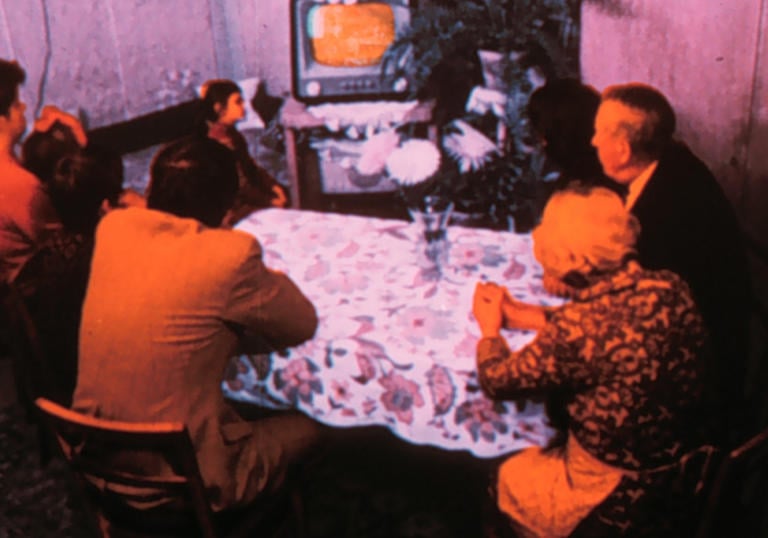Location shooting acts as an archival record of the built environment that offers much to moviegoers and urbanists alike, as Thom Andersen’s epic filmic essay, ‘Los Angeles Plays Itself’, so eruditely teaches us through its forensic dissection of LA as the world’s greatest living film lot. Elsewhere, Pedro Costa’s Colossal Youth and José Luis Guerín’s En Construcción use the moment of an urban community in transition to fashion high-cinematic art from social reality, simultaneously documenting the moment of that reality’s disappearance.
But films can, of course, create their own entirely fictional cities, too. These offer much to the world of architectural speculation and our attempts to understand what urban life means – whether it’s David Byrne’s small Texas town of Virgil in True Stories, and the sing-along tale of suburbia it encapsulates, or the mega-city of the near future in Michael Winterbottom’s sci-fi Code 46, a collage of present-day Dubai, Shanghai and London’s Jubilee Line.
Across myriad screenings we’ve learnt about street kids in ‘America’s most livable city’ (the mesmeric Streetwise); we’ve seen graffiti’s urban artistry contrasted in a double bill depicting its application (Style Wars) and its erasure (The Subconscious Art of Graffiti Removal); we’ve lived in the tunnels beneath New York care of the combination of celebrated documentary Dark Days and Gordon Matta-Clark’s artwork Substrait; we’ve learnt about the humble brick and the psychology of shopping malls through Harun Faocki’s In Comparison and The Creators of Shopping Worlds; we’ve even seen a history of the architectural model’s unsung supporting role across almost 100 years of cinema, through the epic project Mock-Ups in Close-Up.
Who could forget the beauty of Agnès Varda’s poem for the murals of LA (Mur Murs), or Rossellini’s final film, Centre Georges Pompidou, which elegiacally captured the opening day of the Paris museum. Koolhaas’s own eccentric early cinematic endeavors number among the films that Architecture on Film has brought to the screen for their UK debut, joining artist Sarah Morris’s portrait of the Chinese capital in its Olympic year (Beijing), anonymous footage of R Buckminster Fuller meeting the counterculture in 1960s San Francisco (Buckminster Fuller Meets the Hippies) and Abel Ferrara’s tale of the violence that urban regeneration has inflicted upon NYC’s legendary Chelsea Hotel (Chelsea on the Rocks).
The season continues this January under a new curator, offering an evening with the virtual worlds of experimental Polish animator and media-artist Zbigniew Rybczyński, and will continue to foreground the diverse perspectives on architecture and the city that the moving image can uniquely offer. And where better to do all this, than within the singular architecture of the Barbican Centre itself.

